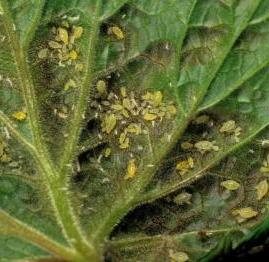Diseases of the currant
Currant, like other garden plants, is not immune from various diseases. What can prevent you from obtaining the coveted harvest and how to cure this plant in case of disease?
Rust
Let's start with such a disease of currant as rust. She often strikes bushes in cottages. On the underside of the sheet appear patches of orange. In the case of exacerbation of the disease leaves from the currant completely fall off. Bushes become weak, yield decreases.
How to deal with rust? First, you should avoid planting currants in those places where sedge grows, and do not plant shrubs too thickly. Carefully clean the site of weeds. In autumn, dig deeply the soil and put autumn leaves into it. To fight the disease, spray plants with a solution of copper or iron sulfate, as well as Bordeaux fluid.
Anthracnose
For such a disease of currants, as anthracnose,is characterized by the appearance of small brown spots, which have a darker color at the edges. He affects not only the currant in early May, but also gooseberry. Spots with time grow and merge into one, and the leaves begin to turn yellow, twist and fall off. The red currant disease is affected by fruits, stems and petioles of leaves. Anthracnose leads to premature fall of leaves and delayed shoots in growth.
In order to combat anthracnose, the soil needsdig in early spring and late autumn, mixing there fallen leaves from the bush. Before buds are dissolved, plants need to be sprayed with a solution of copper or iron vitriol (50-100 or 300 grams per 10 liters of water). During the growing season, the plant needs to be sprayed four times with a one-percent solution of the Bordeaux liquid. When spraying, it should fall on both sides of the sheet - both upper and lower. The first time a currant needs to be sprayed when buds bloom, the second after flowering, the third one 10-15 days after the second, and the fourth after harvesting.
American powdery mildew
No less harm than anthracnose, apply currantAmerican powdery mildew. How do you know if the currant has been affected? On the leaves a white mealy coating appears, which eventually becomes dense and changes its white color to brown. Fungus, which is the causative agent of this disease, affects only young organs and currant tissues - annual shoots, unripe berries, recently blossoming leaves.
To avoid this disease of currant, in autumn withThe plot is completely removed by old branches and fallen leaves, as well as affected shoots (in all these places, as a rule, the mildew of American powdery mildew tolerates winter). Early in the spring, while the buds are not yet budding, it is recommended to pour the bushes with hot water. Since the beginning of spring, it is recommended to spray the plant with cow dung, which should be diluted 6-8 times with water. For the prevention of this disease, use an infusion of wood ash - 1 kg per 10 liters of water, which is heated in the sun. The solution is insisted for 5-7 days or boiled for half an hour. After that, you need to drain it and add a little soap. The thick must be diluted to 10 liters and after that you can spray it with bushes.
Makhrovost
With regard to such a disease of currant, asmakhrovost, then it can completely deprive the plant of the crop. Makhrovost attacks the black currant and is transmitted by the kidney mite. This disease can be detected during flowering. Blades on the leaves become only three instead of the usual five, they are lengthened and sharpened. The leaves lose their habitual smell of currant and appear to be darker in appearance than healthy ones. The calyx, corolla and stamens acquire a purple color, and the flowers wither and stay on the branches for a long time. Berries on diseased branches are not formed at all. As a rule, the swallowing develops on the plant gradually - first the disease affects only a few branches, and only with the years the whole bush. Unfortunately, there are no varieties that would be resistant to this disease.
You need to fight with swords in the following ways. Attent to the planting material - use cuttings only from those plants on which for three years there were no symptoms of this disease. At the end of flowering, carefully inspect the bushes. If an affected plant is found, then uproot the entire bush and burn it. You can cut their individual diseased branches, when the disease only began to develop. But there is no guarantee that it will not start again.
These are the main diseases of the currant and their treatment. As we see, to save a plant in most cases is possible, most importantly - in time to pay attention to the manifestation of the symptoms of the disease and take up the treatment of the "patient".







